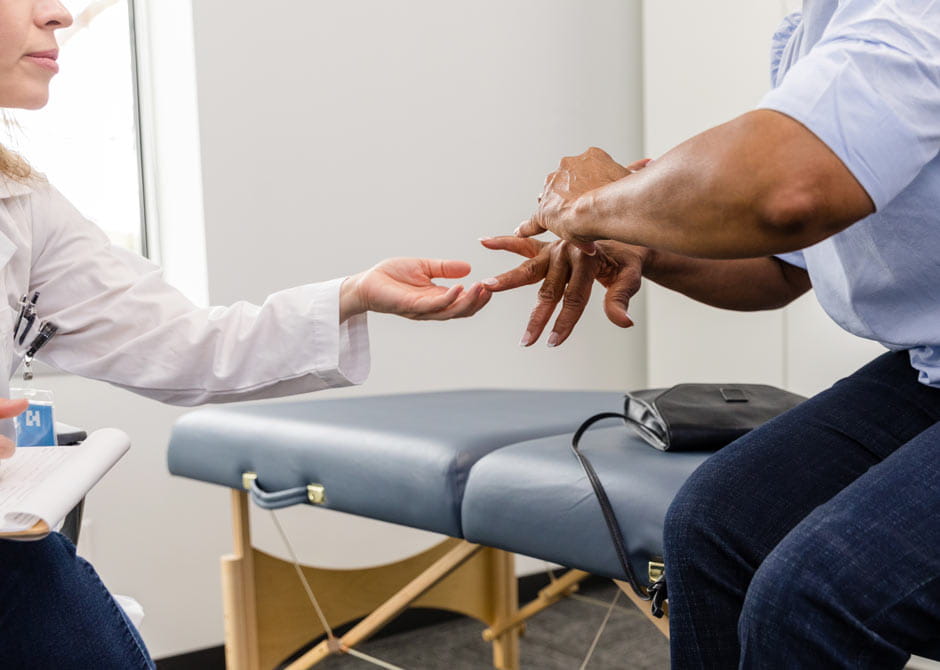 What is trigger finger?
What is trigger finger?
Trigger finger, also known as stenosing tenosynovitis, is a result of scarring or inflammation between the tendon and its surrounding sheath. Trigger finger is a painful orthopedic condition that makes the affected finger lock or catch when you try to straighten the finger from a bent position.
It most often occurs in the ring finger or thumb but can occur in other fingers. Repeated movement can inflame the finger’s tendon, causing trigger finger.
For some people, trigger finger may heal on its own over a period of time, while others can develop further stiffness.
What causes trigger finger?
There are pulleys and tendons in your hand that allow your fingers to bend. The tendons are like ropes that connect the muscles from your arm to the bones in your fingers and thumb. The pulleys are rings that make a tunnel for the tendons to glide through and they hold the tendons close to the bone. When the pulley becomes thick at the base of the finger or thumb, the tendon is not able to move as easily as it should. If the tendon is inflamed and becomes swollen, it is hard to straighten or bend the finger, resulting in trigger finger.
This inflammation or swelling can be caused by repeated movements or holding something that vibrates, like a power drill, over a long period of time. Even gripping bicycle handlebars can cause trigger finger. In addition, trauma to the finger or conditions such as arthritis, gout and diabetes may be the reason you experience trigger finger.
Symptoms of trigger finger
When a single finger locks into a position where you are not able to straighten or bend it, you likely have trigger finger. In addition to this stiffness, you may also have one or more of these signs:
- Painful clicking or snapping sensation when you bend or straighten your finger.
- Stiffness in your finger, especially in the morning
- Pain or tenderness at the base of the finger or thumb
- A “locked” finger you can’t straighten
- A nodule or bump at the base of the finger
Diagnosis of trigger finger
Aside from the visual observation of the immobile or stiff finger, your physician will perform a thorough medical history and physical exam to definitively determine your diagnosis.
How is trigger finger treated?
If symptoms are persistent, painful, and affect activities of daily living, it’s time to see a doctor. Home treatment of trigger finger, and prescribed treatment after a medical examination, may include:
- Taking nonsteroidal anti-inflammatory (NSAID) medicine
- Injections to relieve inflammation
- Wearing a splint for a short period
- Changing your activities to limit motion
- Taping the affected finger to a healthy finger
Hand surgery may only be necessary if pain inhibits your normal daily activities and symptoms are not well controlled with conservative measures. Surgery to relieve trigger finger is most often done as an outpatient procedure with local anesthetic. You may have some soreness initially postsurgery but can resume normal activities such as driving and writing quickly and can expect a full recovery in approximately four to eight weeks.
Why choose Ohio State for treatment of trigger finger?
When treating your trigger finger, we start with the least invasive techniques first. However, injections are the most effective treatment of trigger finger. If injections aren’t effective and surgery is recommended, one of our hand surgeons who has extensive training will perform surgery in our procedure room with wide-awake local anesthetic or in the operating room with full sedation.
